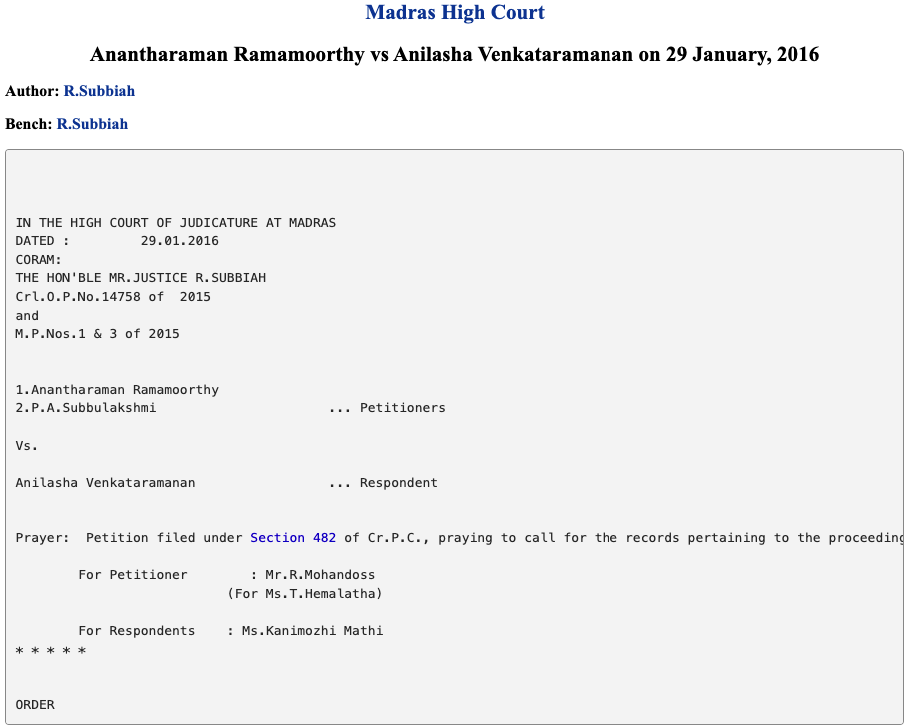Introduction:
The case of Anantharaman Ramamoorthy vs Anilasha Venkataramanan revolves around a petition filed under Section 482 of the Criminal Procedure Code (Cr.P.C.), seeking to quash proceedings in M.C. No. 8 of 2015 before the XVIII Metropolitan Magistrate, Saidapet.
Background:
The petitioner, Anantharaman Ramamoorthy, and the respondent, Anilasha Venkataramanan, got married on July 2, 2015, in Chennai. The petitioner, employed as a Software Engineer in the USA, returned to India to bring the respondent with him after she obtained her dependent visa. However, the respondent returned to India soon after arriving in the USA, alleging impotency on the part of the petitioner and harassment by him and his mother. Subsequently, the respondent filed M.C. No. 8 of 2015 under the Protection of Women from Domestic Violence Act, 2005, seeking maintenance.
Key Arguments:
The petitioner argued that the respondent was employed and earning income at the time of filing for maintenance. Additionally, it was alleged that the respondent did not disclose certain sources of income, including interest from securities and rental income from property. The petitioner sought to quash the proceedings based on these grounds.
Court’s Observations:
The court noted that an order had already been passed directing the petitioner to pay interim maintenance to the respondent. The court observed that if the petitioner wished to challenge this order, he should have done so directly rather than seeking to quash the entire maintenance case.
Madras High Court’s Decision:
The Madras High Court dismissed the petition, stating that the petitioner should have challenged the order for interim maintenance separately instead of seeking to quash the entire maintenance case. The court emphasized that the petitioner’s arguments could be raised in appropriate proceedings challenging the maintenance order. The Madras High Court dismissed the petition and closed the connected miscellaneous petitions, directing the parties to pursue their grievances through appropriate legal channels.
Supreme Court Update:
The matter was further taken to the Supreme Court of India as a Special Leave Petition (CRL.) No. 5610/2016. On July 5, 2017, the Supreme Court bench comprising Hon’ble Mr. Justice Ranjan Gogoi and Hon’ble Mr. Justice Navin Sinha reviewed the case.
Supreme Court’s Order:
The counsels for both parties informed the court that the dispute had been resolved through mediation. Consequently, the Supreme Court issued the following order:
“Learned counsels for the parties submit that the dispute between the parties has been settled in mediation. Parties to give effect to the terms of settlement. The Special Leave Petition as also all pending applications therein are disposed of in the above terms. The amount in deposit in the Registry of this Court along with interest, if any, shall be released to the respondent – wife upon due verification forthwith.”
Conclusion:
The Supreme Court’s decision underscored the importance of mediation in resolving disputes amicably. The Supreme Court’s order brought a conclusion to the legal battle between Anantharaman Ramamoorthy and Abilasha Venkataramanan, directing the parties to honor the terms of their settlement and facilitating the release of the deposited amount to the respondent.
